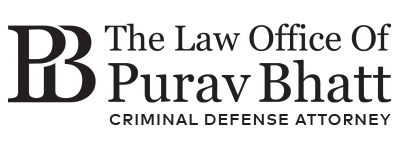Offense Investigation:
Once an allegation has been made that a law has been broken, the police are contacted, and an investigation is performed. It is at this stage that an initial assessment is made whether a factual basis exists supporting the allegation that a crime has occurred.
Arrest:
Once it is established that probable cause exists, the decision about when an arrest will be made depends on many factors. A defendant may be arrested at the crime scene or an arrest may not occur until after the police have met with a prosecutor and a warrant for the defendant’s arrest has been issued by a judge.
“Charging” the Defendant:
Three methods are available for charging defendants:
- Information– An Information is a charge made by the State’s Attorney. The common procedure involved in filing an Information begins with a police detective presenting information to a prosecutor showing that probable cause exists based upon the information contained in the police report. In the event that a prosecutor finds that probable cause does exist, the prosecutor will draw up the charging documents and the police detective will while under oath present the probable cause evidence and the charging documents to the judge. The judge will decide whether probable cause exists and if so will authorize the charge and any related actions such as an arrest warrant.
- Complaint– A Complaint is filed similarly to that of the Information, however the affiant in the case of a Complaint would be the victim or complainant instead of a police detective as described above. Complaints are limited to misdemeanor charges. The victim or complainant would meet with a prosecutor and present the factual basis for the offense, and if the prosecutor determines that probable causes does exist, the victim or complainant would present the probable cause evidence while under oath to a judge.
- Indictment– An Indictment is different from to both an Information and a Complaint. An Indictment results from a Grand Jury convening and hearing testimony from which probable cause is determined to exist. If probable cause is found, the Grand Jury returns a True Bill and charges are issued in the form of an Indictment
Arraignment:
A defendant must be informed of the charges lodged against him. This is done at the Arraignment. The judge reads the charge to the defendant, the possible penalties related to the offense class are explained, bond is set and a Pre-Trial Conference is scheduled.
Preliminary Hearing:
At a Preliminary Hearing, the State presents evidence of probable cause in a formal court hearing and the defendant’s attorney may cross examine the State’s witness(es). The presiding judge determines the existence of probable cause based upon the evidence presented and if probable cause is found to exist, the matter is set over for a series of upcoming hearings: Pre-Trial Conference, Plea Date, and Trial.
Pre-Trial Conference:
The Pre-Trial Conference provides an opportunity for the State and the defendant’s attorney to attempt to resolve the case through a process of plea negotiations. One or more Pre-Trial Conferences may occur prior to the case progressing further.
Plea Date:
A Plea Date provides a final opportunity for the defendant to enter a plea of guilty before the matter goes to trial.
Trial:
For a trial, the case is set to be heard by a trier of fact. The trier of fact may either be a judge or a jury. The State has the burden of proof to prove the offense occurred beyond a reasonable doubt. If the trier of fact finds the State has met its burden of proof, a finding of guilty is established and the case proceeds to sentencing.
Pre-Sentence Investigation:
Once a defendant has been found guilty, the defendant must be sentenced. Prior to being sentenced by a judge, a Pre-Sentence Investigation (PSI) is ordered to be completed and is done by a Probation Officer from the Department of Court Services. From this investigation, a thorough report called a Pre-Sentence Investigation Report is written and supplied to the judge, the defendant’s attorney, and the State. The report contains detailed information about the defendant including demographics, social history, criminal history, employment and other significant information as well as a victim impact statement and restitution information. The purpose of the report is to provide a complete picture of the defendant and the offense to the judge so that the judge is better prepared to impose a sentence.
Sentencing:
Once a defendant has been found guilty, the defendant must be sentenced. A judge has discretion to impose a sentence upon the defendant within the range of penalties commensurate with the crime. However, the judge will take into consideration many factors before sentencing the defendant including the information contained in the Pre-Sentence Investigation Report. Additionally, both the defendant’s attorney and the State may present arguments relative to possible sentence options. A range of possible outcomes depending upon the adjudicated offense include (but are not limited to) fines, terms of supervision or probation, or incarceration.

